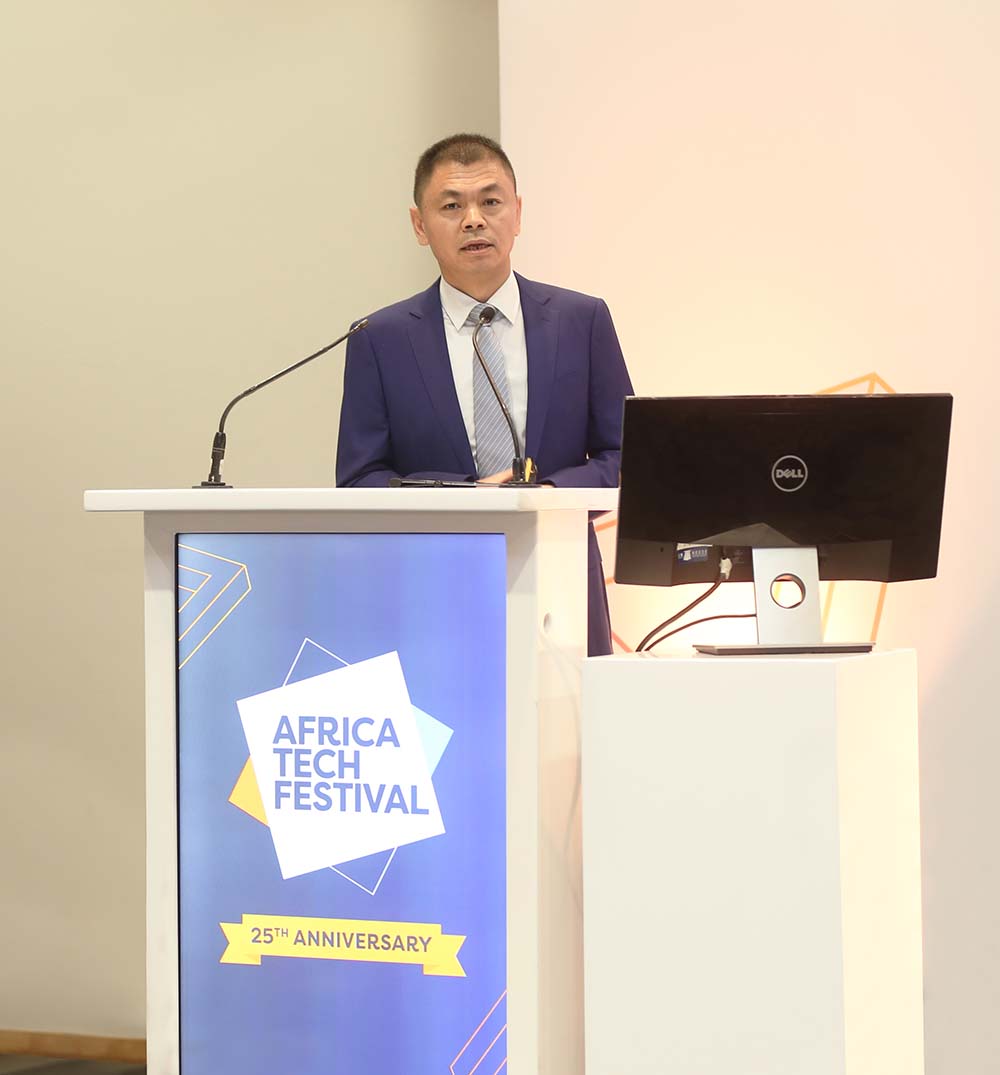Kim Jin, Vice President and CMO of Huawei’s Optical Business Product Line delivered a keynote speech at the recently completed AfricaCom – the continent’s biggest technology conference and exhibition. Titled “Optical Industry Innovation Accelerates Digital Economy Development in Africa”, the talk delved into the major role optical communications is playing in promoting the development of digital economies across Africa.

Kim Jin, Vice President and CMO of Huawei’s Optical Business Product Line.
During the talk, Jin also demonstrated Huawei’s five ground-breaking solutions for typical scenarios such as backbone transmission, metro transmission, home network, and small and micro enterprises (SMEs), as well as the potential applications and value of these solutions in Africa. He additionally called on African operators to actively explore new opportunities, accelerate network upgrades and evolution, and lead the digital future.
“Huawei is committed to working in Africa, for Africa”, said Jin. “Huawei is passionate about working with customers and partners in Africa to explore the best network evolution solution in different phases. By building fibre to everywhere and OTN to every site, Huawei will help customers and partners build future-oriented digital infrastructure and support the rapid development of the digital economy in Africa.”
That kind of commitment has become incredibly important as fibre networks have become an important part of a country’s national strategic infrastructure. During the evolution from F5G to F5.5G, the full potential of fibre networks is unleashed through technological innovations, such as greatly improved connection performance and energy efficiency, upgrading applications from carrier-grade to industrial-grade, and extending from communication to sensing. Given the socioeconomic and operator network development in Africa, Huawei has launched five key solutions to help operators in this region accelerate network evolution, consolidate the digital foundation of homes and industries, and promote digital economy development.
3D-mesh backbone network solution: building ultra-broadband backbone networks
The digital transformation sweeping most industries means that offline data transmission will be replaced with online data interaction. This is driving terminal access requirements and causing communication networks to grow more than 10-fold. To address this issue, Huawei launched the 400G 3D-mesh backbone wavelength division multiplexing (WDM) solution with ultra-broadband spectrum. Super C+L improves the available fibre spectrum by 25% compared with the industry average, from 9.6T to 12T. It also reduces the per-bit cost by 30% when working with high-performance 400G modules. In addition, optical cross-connect (OXC) in this solution can implement non-blocking all-optical switching, reducing footprint by 80% and power consumption by 60%, helping operators build ultra-high-bandwidth, green, and simplified backbone networks.
Alps-WDM solution for metro networks: making networks more flexible
In contrast to the high performance of the backbone network, the metro network focuses more on resource utilisation and service access flexibility. Currently, metro optical networks face problems such as uneven service distribution and low resource utilisation. To solve these problems, Huawei launched the innovative Alps-WDM solution. This solution uses the unique wavelength resource pool technology to reduce the number of components configured on the same metro aggregation node, share and flexibly groom wavelength resources between connected access rings, and flexibly allocate transmission resources. This improves bandwidth 10-fold, reduces carbon emission 10-fold, cuts operational expenditure by 20%, and supports smooth evolution from 100G to 400G/800G.
One ODN for four services: covering all FBB scenarios
To fully utilise existing fibre resources and meet requirements of diverse customers, Huawei developed the Optical Line Terminal (OLT)+ Optical Transport Network (OTN) co-site deployment solution. On an Optical Distribution Network (ODN), four networking solutions (Fibre to the Room [FTTR], FTTR-SME, point-to-multipoint OTN private line, and point-to-point OTN private line; also called 1 + 1 = 4) are provided to connect homes, SMEs, medium-sized enterprises, and top enterprises. Operators can select different connection solutions based on service requirements in different scenarios. By sharing ODN networks and connected devices, the total cost of ownership for the entire network is reduced by about 50%.
FTTR for Home solution: redefining home broadband experiences
Overall fibre to the home (FTTH) coverage in Africa remains low at present. There is, however, no doubt that FTTH and FTTR are the future of home connectivity. Against this backdrop, Huawei innovatively launches the FTTR for Home solution that extends gigabit coverage to rooms in a home using fibre connections. This solution uses ultra-flexible transparent fibres to extend optical signals to each room in a home and provides high-speed Wi-Fi coverage in each room through master and slave FTTR units. What’s more, the average fibre deployment time in each room is only 20 minutes, and more than 200 terminals can access one home network.
FTTR for SME solution: providing high-quality connections and one-stop services
SMEs have different connectivity requirements to those of large and medium-sized enterprises. Individual tenants in street coffee shops or office buildings, for example, require a lightweight network solution and one-stop services. This need represents a promising opportunity for operators. To respond to such requirements, Huawei proposed the FTTR for SME solution. Like FTTR for Home, the FTTR for SME solution reuses the existing ODN network, extends fibres to SMEs, and expands a private line into an enterprise intranet at a low cost. Compared with the traditional switch networking, the FTTR for SME solution reduces the device cost by 15% and engineering cost by 70%. In addition, operators’ professional teams can perform remote online maintenance to provide one-stop network services with high bandwidth and premium Wi-Fi experiences for SMEs.
